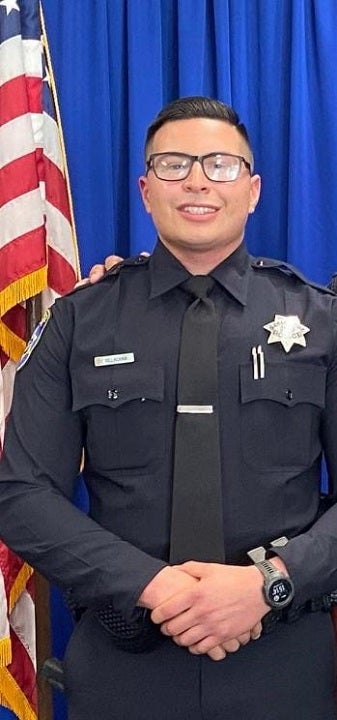You are making the kind of assumptions you chided others about.
You seem to be envisioning "shot himself in one hand" as some sort of stigmata-style hole through the palm. Suppose the wound to the "hand" is a graze across the heel of the hand.
Going back to your 1911 example it is easy to shoot your own hand, but unlikely to occur during cleaning or reasonable handling because there is no reason to press the trigger at any point in disassembly.
On the other hand, the vast majority of police firearms are striker-fired pistols and many require pressing the trigger while removing the slide. VERY EASY to have your non-dominant hand in a position where a round would graze the heel of your hand while removing the slide.
If our young officer was actually about to clean his pistol, it seems likely that he removed the magazine but failed to remove the round from the chamber. This sort of mistake is common enough that various jurisdictions keep trying to demand the "magazine safety" feature for all guns. This could happen from distraction, carelessness, etc.
As a California police officer, this shooter certainly had formal training with his duty firearm and any backup that he was approved to carry. That formal training is conducted under circumstances that make failures to clear the gun nearly impossible but also unimportant. Mechanical training is conducted separately from marksmanship training. He would have been trained to clear the pistol properly, but that training is conducted in a safe environment with no live ammunition involved. This is considered essential for safety because it ensures that the kind of mistake that apparently happened won't cause any problem in the classroom. Clearing his gun at a firing range should be observed by the range officer or RSO, but that doesn't happen 100% and I've never heard of a training range where disassembling the gun is part of the supervised range exercise.
And of course in the official police press release, which is from the City of Salinas, not where he worked 40 miles away, they pointed out that it was a "personal weapon." You said he was about to clean his pistol, is there a link that said it was a pistol? I have read many but none yet that confirmed that this "personal weapon" was a pistol. We just assume that it was. Maybe it was an AR pistol? Of maybe a long gun? We are all assuming. My point is having been trained and investigated many incidents, at some point, whatever type of gun it was, will have to be held and pointed in such a way that the trigger was activated while one hand is in front of the barrel and the gun was pointed at the person now described as a by-stander. Of course there could have been a ricocheted off of the stereo in the corner or the fridge,, but when we re-create a theory of the crime or accident, all of those things must line up. I use the dowel rod example because it makes it easier for people to visualize. If you have a couple of dowel rods, try it with your own handgun, if not use a couple of arrows. Now, try it with a long gun. Not a lot of easy ways to line up the shot and the trigger being pulled so that in the instant the bullet hits one hand and the torso of another. You gotta try it to understand.
In the real world we use trajectory kits and dummies. Like this.
![]()
These yellow ones are protrusion rods, I have some that are about 22 caliber and 16 foot long when together. And we use lasers once we have a confirmed angle of fire.
And these little guys below are laser trajectory centering cones. You stick them in a hole in a wall or object, then shine the laser through to find the possible angles the bullet might take. There is a lot more to it, the investigator will conduct a blood splatter analysis to make sure the officers story lines up with who was where when the shot happened. And of course they have already swabbed the hands of both parties for gun powder residue. The just want to know for sure if the by=stander was across the room or 2 feet away, powder residue and splatter will tell them that. Why does it matter? Because, the real story may not be the one we are hearing. If everything lines up, cased closed.
People shoot themselves every day, just happens. And they shoot other people accidentally every day. But shooting both yourself and another person is not common. It is less common for a police officer to do it. Every shooting deserves a simple basic investigation. We just do not have much information at all. That is all I ma saying, lots of possibilities but until everything lines up, we do not know the actual facts.

 www.foxnews.com
www.foxnews.com






